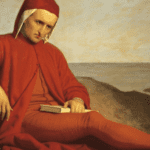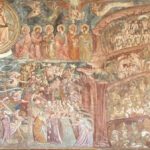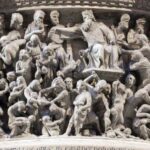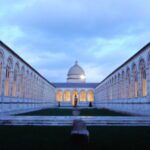The Blue Palace: let’s discover the history and origins. After the leaning tower and the Piazza dei Miracoli, the Palazzo Blu is among the most famous elements of Pisa thanks to the temporary exhibitions that bring the protagonists of contemporary art to the city.

The Blue Palace: the origins
The Pisan Lungarni are the heart of the city and present an extraordinary panorama that was described and loved as early as the 1800s by authors from all over the world such as Lord Byron, Percy Shelley and Giacomo Leopardi who preferred them to the Florentine ones.
One of the best points from where you can enjoy this spectacle, especially at sunset, are the bridges or squares overlooking the river, among which the most eventful is certainly the Piazza Garibaldi [from where we pass with our Pisano Tour].
Among the palaces that frame the riverside there is one that stands out among others for its particular color: the Palazzo Giuli Rosselmini Gualandi, today Palazzo BLU.
The area where the building is located has a very ancient history.
In fact, already in the High Medieval period there are the first rural settlements near the Lombard Church of Santa Cristina, renovated many times but which maintains the original apse, and the Ponte delle Pietre, which no longer exists.
A real palace was born only in 1356 when Giovanni Dell’Agnello, the only doge who existed in Pisa, decided to build his Domus by joining a series of tower houses.
He created a structure composed of large Verrucan stone pillars, joined to form ogival arches, filled with bricks and decorated with single-hole and double-hole openings.
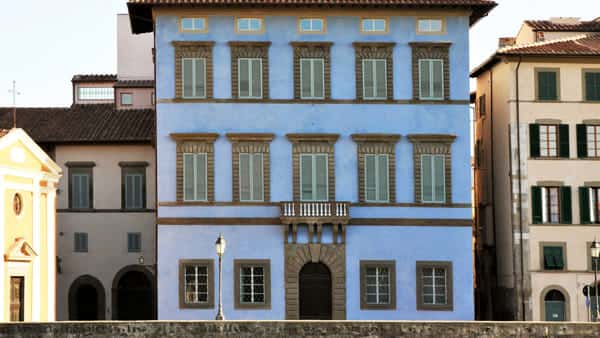
The Palazzo Blu and the Medici family
During the first Florentine conquest, that is, between 1406 and 1494, the palace became the seat of the five providenters responsible for the surveillance of the city.
The building passed to the Municipality, as the Dell’Agnello family was in decline.
It is said that in 1495 a dance was organized there with the most beautiful Pisan girls to welcome the King of France Charles VIII, to ask him for help in his liberation from the Florentine dominion.
Among the maidens was also Camilla del Lante, one of the most beautiful maidens in the city, and that evening a captain of the French army came in love with her.
Thanks to him who remained in the city with his troops, despite the contrary order of the King, Pisa had a few years of freedom.
In the sixteenth century the palace passed to the Del Testa family.
This makes the first changes to the palace, giving it the typical Renaissance appearance with the Serena stone of the typical gray color.
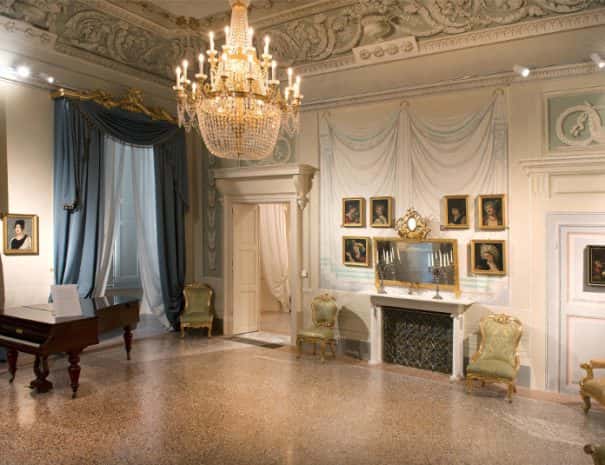
From the eighteenth century to the present day
Further changes were made in the eighteenth century by the Agostini family, who choose the typical those Blue, color of the air.
This coloring is ‘copied’ from the Russian palaces in St. Petersburg, used to sweeten the shapes of the palaces.
For the interior, grotesque decorations are commissioned from Antonio Niccolini.
These are still visible in the noble plan.
In 1861 it was bought by the Counts Giuli who restored and brought the palace to its current appearance.
They enlarge and make symmetrical the facade, which goes from 4 to 5 windows, and add a portion of the building.
Nicola Torricini is entrusted with the interior decorations and the end of the work is celebrated with a large dance in the Sala Rossa.
During the last war it was the moose of the Allied forces and fortunately it suffered no damage either in the conflict or by the great flood of the Arno in 1966.
In 2001, the last Conti Giuli (who became Giuli Rosselmini Gualandi) sold the building to the Fondazione Cassa di Risparmio di Pisa.
The latter begins an extensive restoration work that gives extensive results and reveals archaeological finds, architectural remains and details on the original color.
It has been open to the public since 2008 under the name BLU, PALAZZO D’ARTE E CULTURA.
In the next article we will find out what is hidden inside this wonderful palace.

